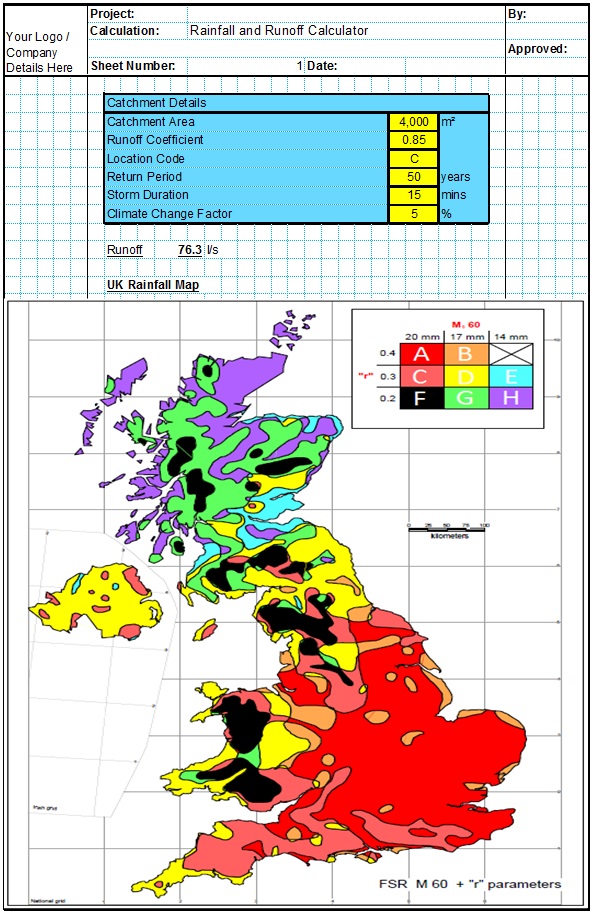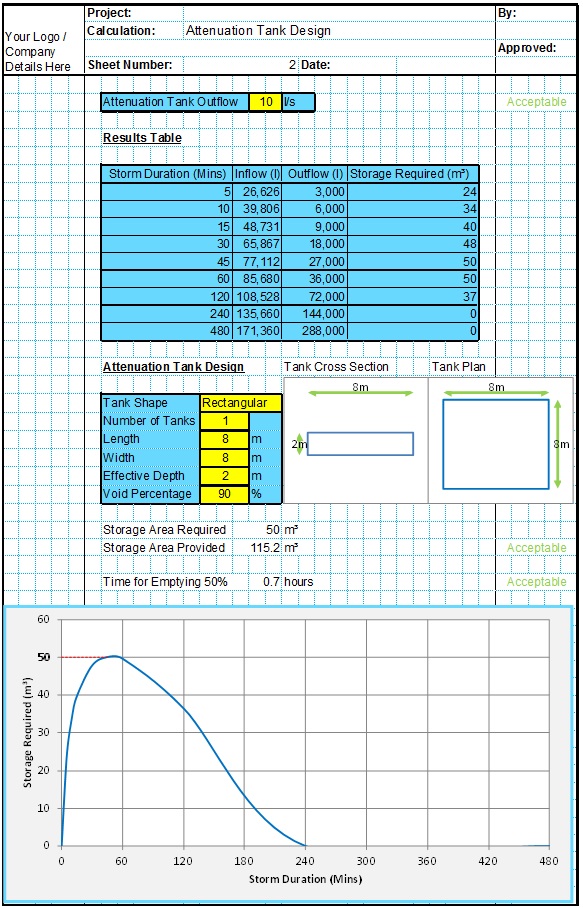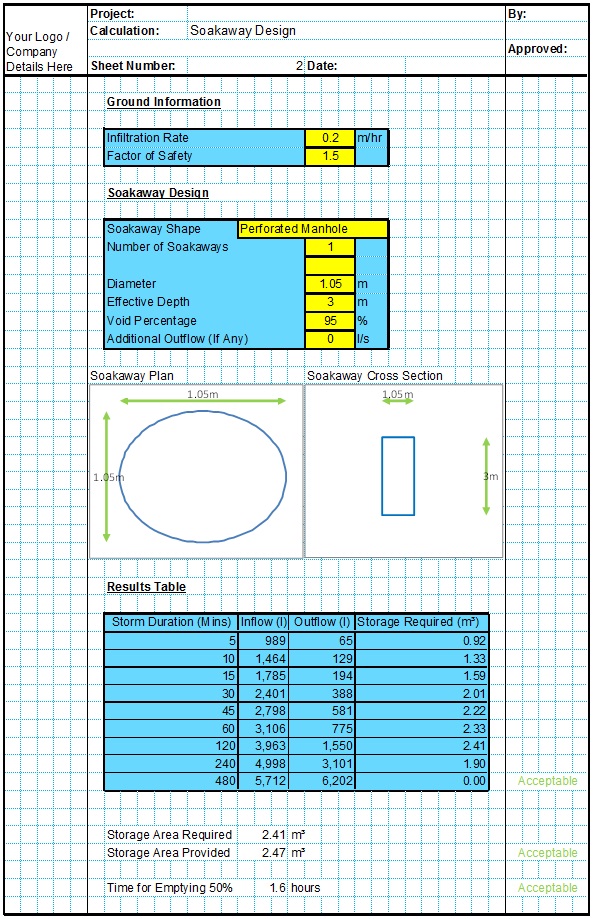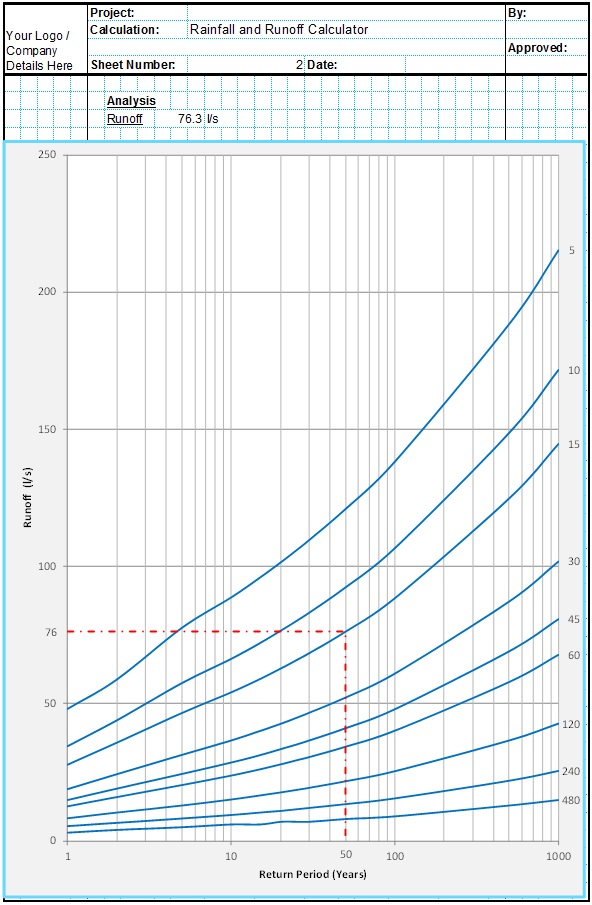The Manning Coefficient for sheet flow is used in the time of concentration formulas that attempt to model sheet flow.
The Manning Coefficient value for sheet flow is quite different to the equivalent value for open channel flow. As the assumed flow depth is very small, the sheet flow coefficient is dependent on the conditions on the surface and can be significantly affected by small changes, for example between lightly grassed surfaces and more densely grassed surfaces. Only the first 30mm need be considered as this will be the max height of the sheet flow.
The coefficient takes into account the effects of raindrop impact, the roughness of the surface, obstacles such as protruding rocks, leaf litter, crop ridges etc, and erosion and transportation of sediment. Where sediment may accumulate, for example on shallow sloped pavements or gutters, a value of 0.002 should be added to the coefficient.
Typical Values for Manning Coefficient for Sheet Flow
| Urban | Lower Bounds | Upper Bounds |
| Asphalt Pavement | 0.010 | 0.015 |
| Smooth Concrete (Float Finish) | 0.012 | 0.015 |
| Smooth Concrete (Brush Finish) | 0.014 | 0.016 |
| Gravel Areas | 0.020 | 0.030 |
| Bare Packed Soil | 0.010 | 0.020 |
| Packed Clay | 0.030 | 0.040 |
| Bare Sand | 0.010 | 0.016 |
| Short prairie grass and lawns | 0.100 | 0.200 |
| Dense grasses (weeping lovegrass, bluegrass, buffalo grass, blue grama grass, native grass mixtures, alfalfa, lespedeza) | 0.200 | 0.240 |
| Bermuda grass | 0.300 | 0.480 |
| Woods or forest with light underbrush | 0.400 | |
| Woods or forest with dense underbrush | 0.800 |
| Pipes & Channels | |
| Wood Lining | 0.014 |
| Blocks or Brisk with Cement Mortar | 0.014 |
| Vitrified Clay | 0.015 |
| Cast Iron | 0.015 |
| Corrugated Metal Pipe | 0.024 |
| Cement Rubble Surface | 0.024 |
| By Landuse | |
| Parkland | 0.350 |
| Rural Residential | 0.300 |
| Urban Residential | 0.210 |
| Medium Density Urban Residential | 0.110 |
| Industrial | 0.060 |
| Commercial | 0.040 |
| Woods or forest with light underbrush | 0.400 |
| Woods or forest with dense underbrush | 0.800 |
| Agricultural Land | ||
| Fallow - no residue | 0.008 | 0.012 |
| Conventional tillage - no residue | 0.060 | 0.120 |
| Conventional tillage - with residue | 0.160 | 0.220 |
| Chisel plow - no residue | 0.060 | 0.120 |
| Chisel plow - with residue | 0.100 | 0.160 |
| Fall disking - with residue | 0.300 | 0.500 |
| No till - no residue | 0.040 | 0.100 |
| No till - 20-40% residue | 0.070 | 0.170 |
| No till - 60-100% residue | 0.170 | 0.470 |
| Sparse rangeland with debris - no cover | 0.090 | 0.340 |
| Sparse rangeland with debris - 20% cover | 0.050 | 0.250 |
| Moldboard Plow | 0.020 | 0.100 |
| Short prairie grass and lawns | 0.100 | 0.200 |
| Dense grasses (weeping lovegrass, bluegrass, buffalo grass, blue grama grass, native grass mixtures, alfalfa, lespedeza) | 0.200 | 0.240 |
| Bermuda grass | 0.300 | 0.480 |
| Woods or forest with light underbrush | 0.400 | |
| Woods or forest with dense underbrush | 0.800 |
Related Spreadsheets from CivilWeb;
Runoff Calculator Spreadsheet
This spreadsheet calculates the design runoff flow for a site in accordance with the a number of different methods including the Wallingford Procedure.
Attenuation Design Spreadsheet
This spreadsheet calculates the requirements for a attenuation system and assists the user to design a suitable system.
Soakaway Design Spreadsheet
This spreadsheet calculates the requirements for a soakaway system and assists the user to design a suitable system.
Full Drainage Design Suite
Full drainage design suite (50% Discount) including 7 spreadsheets;
- Colebrook White Pipe Design
- Manning Pipe Design
- Manning Open Channel Design
- Linear Drainage Design
- Runoff Calculator
- Attenuation Design
- Soakaway Design



